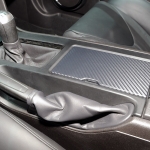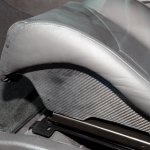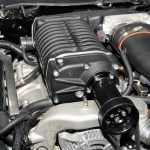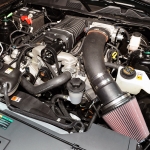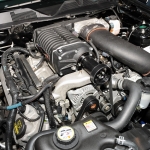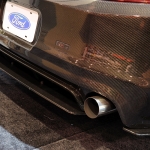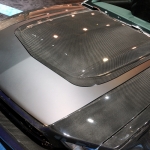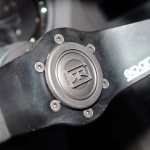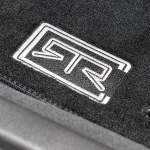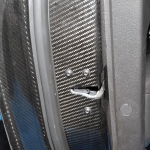 Cutting the weight of new cars and trucks by up to 750 pounds by the end of the decade is a key component of Ford’s strategy to improve fuel efficiency. In order to help achieve that goal, Ford Motor Company is partnering with Dow Automotive Systems, a business unit of The Dow Chemical Company, to research the use of advanced carbon fiber composites in high-volume vehicles.
Cutting the weight of new cars and trucks by up to 750 pounds by the end of the decade is a key component of Ford’s strategy to improve fuel efficiency. In order to help achieve that goal, Ford Motor Company is partnering with Dow Automotive Systems, a business unit of The Dow Chemical Company, to research the use of advanced carbon fiber composites in high-volume vehicles.
“There are two ways to reduce energy use in vehicles: improving the conversion efficiency of fuels to motion and reducing the amount of work that powertrains need to do,” said Paul Mascarenas, Ford chief technical officer and vice president, Research and Innovation. “Ford is tackling the conversion problem primarily through downsizing engines with EcoBoost® and electrification while mass reduction and improved aerodynamics are keys to reducing the workload.”
Ford is investigating a range of new materials, enhanced design processes and new manufacturing techniques that would enable automotive structures to meet increasingly stringent safety and quality standards while cutting weight. Read more!
“Vehicle weight reduction for our customers through intelligent design with a materials focus has been a priority for Dow Automotive Systems,” said Florian Schattenmann, director of Research and Development for Dow Automotive Systems. “This partnership with Ford on carbon fiber composites is a logical next step to progress already achieved through the use of lightweight, high-strength polymers and structural bonding technology.”
Carbon fiber composites have been used in aerospace and racing cars for decades due to their unique combination of high strength and low mass. Until recently these materials have been far too costly for use in high-volume mainstream applications.
Dow Automotive Systems and Ford have signed a joint development agreement that will see researchers from the two companies collaborate on several fronts. The development teams will focus on establishing an economical source of automotive-grade carbon fiber and develop component manufacturing methods for high-volume automotive applications.
The partnership will seek to combine the best of Ford’s capabilities and experience in design, engineering and high-volume vehicle production with Dow Automotive’s strengths in R&D, materials science and high-volume polymer processing.
“Reducing weight will benefit the efficiency of every Ford vehicle,” added Mascarenas. “However, it’s particularly critical to improving the range of plug-in hybrid and battery electric vehicles.”
The joint development effort will also leverage work that The Dow Chemical Company has already begun through partnerships with Turkish carbon fiber manufacturer AKSA and the U.S. Department of Energy Oak Ridge National Laboratory.
If the joint development effort is successful, carbon fiber components may begin appearing on new Ford vehicles in the latter part of this decade as product development teams work toward meeting new fuel efficiency standards of more than 50 mpg and extending the range of plug-in vehicles.
Please note the carbon-fiber Mustang in the photos is just a limited-production car shown at SEMA in 2009 – The Vaughn Gittin Jr. RTR-C Mustang Photos: credits to Autoblog
